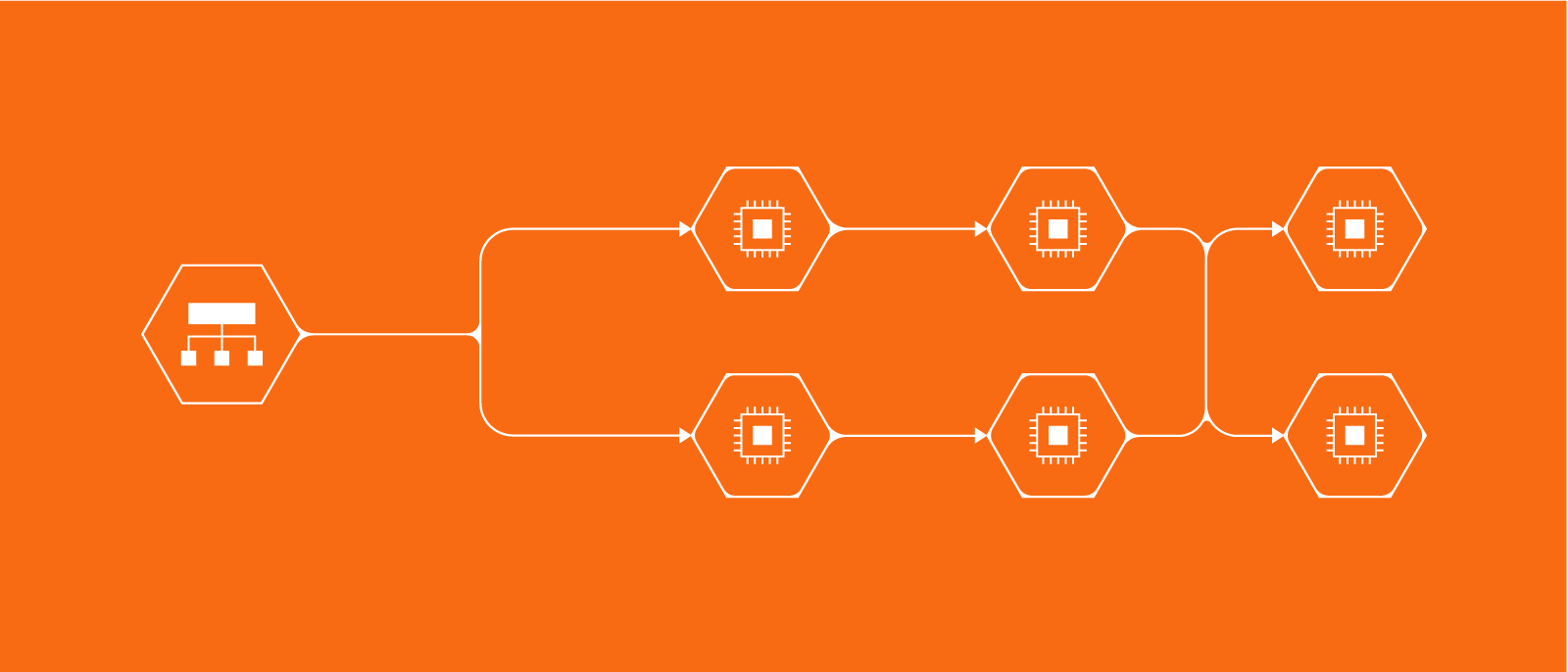When you’re designing an app, you can use visuals to help build out the details. Using wireframes, you can visualize your app’s actual interface through informal sketches. Visuals help teams efficiently collaborate on their app and create mockups to show user focus groups, upper management, and other stakeholders.
Identify the goals and objectives of the app
To design and build your app, your team needs to understand the specific goals and objectives behind the application. This information builds the app's scope and enables further project planning. Goals and objectives typically mention functionality even if the precise features haven't been determined yet. Your organization's mission and vision for the app are a starting point. From there, you can begin prototyping and developing the next phase of your planning.
- Reason for the app: Is there a core problem or challenge the app is trying to solve?
- Evaluating the competition: How are users currently solving the problem your app is designed for?
- Design process priorities: What are your priorities for the design and planning process?
Through your app planning process, you can incorporate audience research, user preferences, and other key information. Depending on what your users want, you can sketch out must-have features and design elements. Define your app’s scope by using demographic information, qualitative surveys, and any anecdotal or numerical data.
Research your potential users to understand who they are, what they are looking for, and what use cases your application will be used for.
- Demographics of users: What types of characteristics do your users have? Where do they live and work? What are their work roles?
- User personas: Based on your research, you can develop descriptions and analysis of typical user categories that can guide you through your project planning around user needs.
Plan the app UX
By mapping customer journeys inside your application’s interface, you can look for potential design advantages and disadvantages, determining what would appeal to users. Developers get an at-a-glance perspective of how their code fits into the full project so they do not forget what specific requirements their code needs to cover.
How will the process flow work?
Process flows can have many different steps, increasing the complexity of the overall project without a strong visual overview. As you develop your process flow, streamline it so that the only steps involved are highly specific and represent the core features you need. From there, you can always add additional functionality later.
What is your ideal user journey?
While planning your user journey, think about what your users want to accomplish, how, and when. Consider what you want them to do through each phase of their app usage.
- Account registration and login: How will users create and manage their accounts? How will they log in? Do users have to sign up elsewhere, such as through a website or with help from an IT admin providing individual account access?
- App use: What is the user journey for first-time and returning users, individual users, businesses, and power users? Is there an offline and online mode?
- App integrations: What can you use the app with? How do these integrations work?
- Problem-solving: How does the app solve problems for users, and how does this impact the user journey?
- User options and choices: What possibilities are available to users? What do you want to guide users toward or against?
Walking through a user journey visually with a chart or process flow provides you with the opportunity to revisit each aspect of your user journey and ensure it’s on the right track.

Visualize the look and layout of your app
Creating a wireframe of your app’s layout can assist with planning how your application interface will look. In the beginning of this design phase, exact styling isn’t the main priority. It is more important to focus on how the interface supports your app’s functionality. Later, once you have the right layout configured, you can emphasize design details and elements. For instance, no need to worry about sketching your logo into the wireframe—just write “logo” where the logo will eventually go.
Designers and developers can use your wireframes to plan their code and prototype designs later.
This part of your planning is a good time to refine your scope and choose specific priorities. Whatever is not a priority could be left out of your preliminary design or added to your notes for possible inclusion later.
Execute your design
Before starting your work on the design, carefully review what you’ve finished and check with your team. If you haven’t already done so, this is the time to create a project plan that defines how your project team will complete the work and how stakeholders will be involved in your project.
Timelines may be anchored around a product release, determined by team availability, or impacted by work on other projects. Be sure to plan in time for testing.
Document your design
With your design ready to use, craft visual documentation by using UML (Unified Modeling Language) to show relationships between different aspects of your diagram. Each object is related to other objects, depicting your design in a format with modules. This helps to communicate various aspects of your design in ways that are meaningful and less abstract.

Start visualizing your app with a wireflow template.
Browse templates nowAbout Lucidchart
Lucidchart, a cloud-based intelligent diagramming application, is a core component of Lucid Software's Visual Collaboration Suite. This intuitive, cloud-based solution empowers teams to collaborate in real-time to build flowcharts, mockups, UML diagrams, customer journey maps, and more. Lucidchart propels teams forward to build the future faster. Lucid is proud to serve top businesses around the world, including customers such as Google, GE, and NBC Universal, and 99% of the Fortune 500. Lucid partners with industry leaders, including Google, Atlassian, and Microsoft. Since its founding, Lucid has received numerous awards for its products, business, and workplace culture. For more information, visit lucidchart.com.

